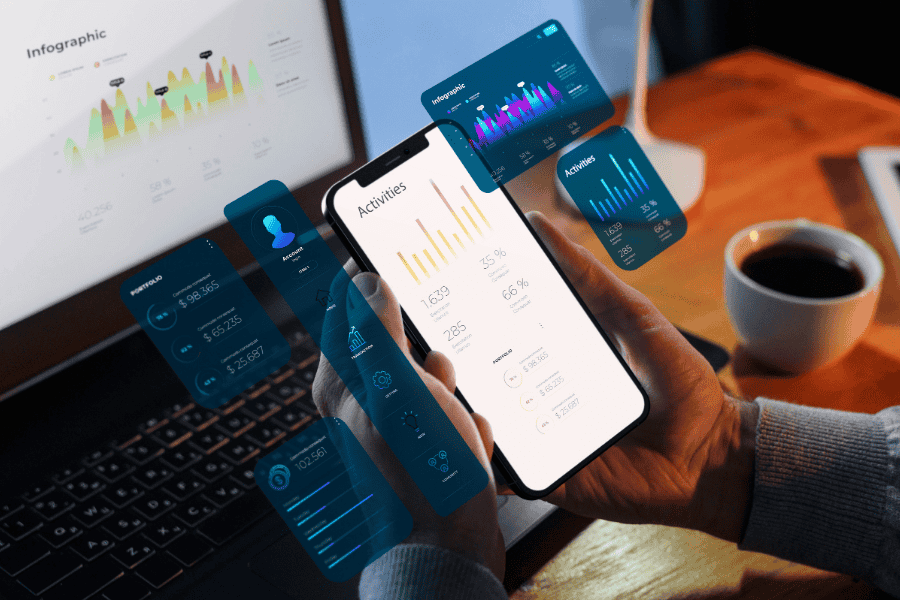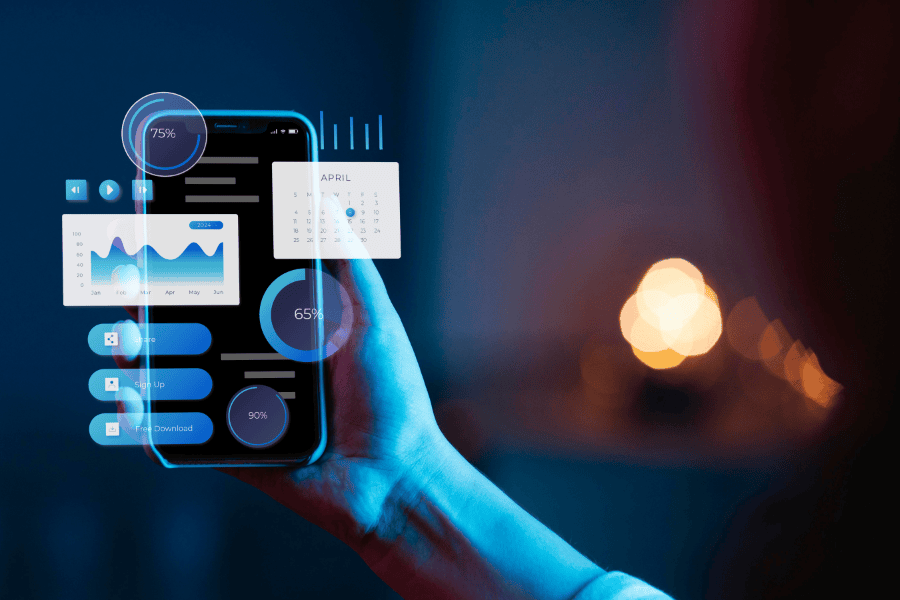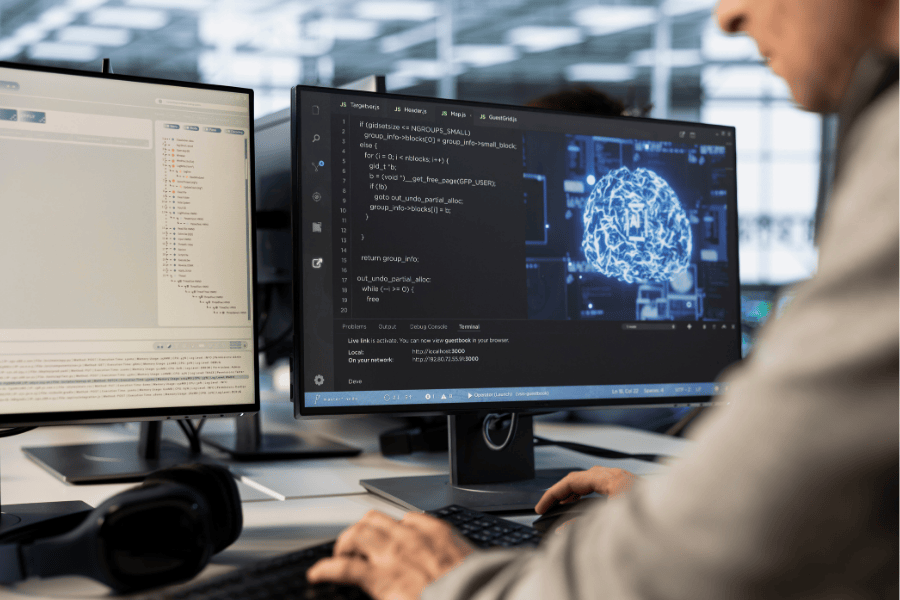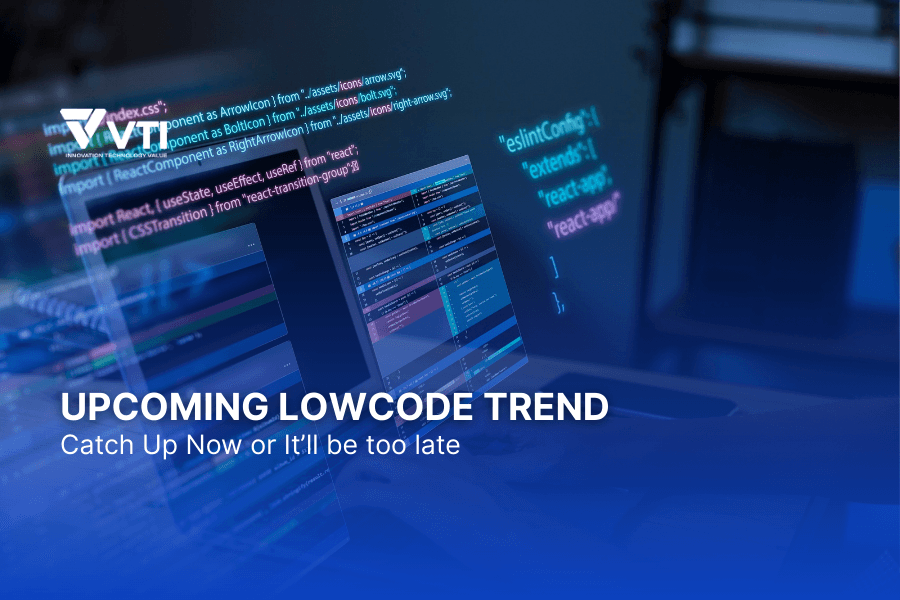With the rise of e-commerce, challenges in last-mile logistics, including high costs and missed deliveries, are pressing retailers. According to Ecommerce News, 5% of online orders fail to be delivered on the first attempt, making last-mile logistics a critical pressure point for retailers. At the same time, shopper behavior is evolving. SAP reports that up to 85% of consumers prefer to engage with brands through both digital and physical touchpoints. This context makes BOPIS (Buy Online, Pick Up In Store) a fulfillment model that combines speed, convenience, and cost-efficiency.
In this article, we’ll explore what BOPIS is, how it works, the business benefits, real-world case studies, and the IT strategies that enable successful implementation. Let’s dive in!
What is BOPIS?
BOPIS, short for Buy Online, Pick Up In Store, is a retail fulfillment model that enables customers to purchase products through an e-commerce platform and collect them from a physical store, rather than waiting for home delivery. In recent years, BOPIS has evolved from an optional add-on to a strategic pillar in many retailers’ unified commerce strategies.
Unlike traditional online shopping that relies entirely on last-mile delivery, BOPIS gives customers greater control over when and how they receive their orders. It reduces delivery delays, lowers shipping costs, and creates new opportunities for in-store engagement. For retailers, BOPIS not only increases operational efficiency but also drives foot traffic and strengthens brand connection.
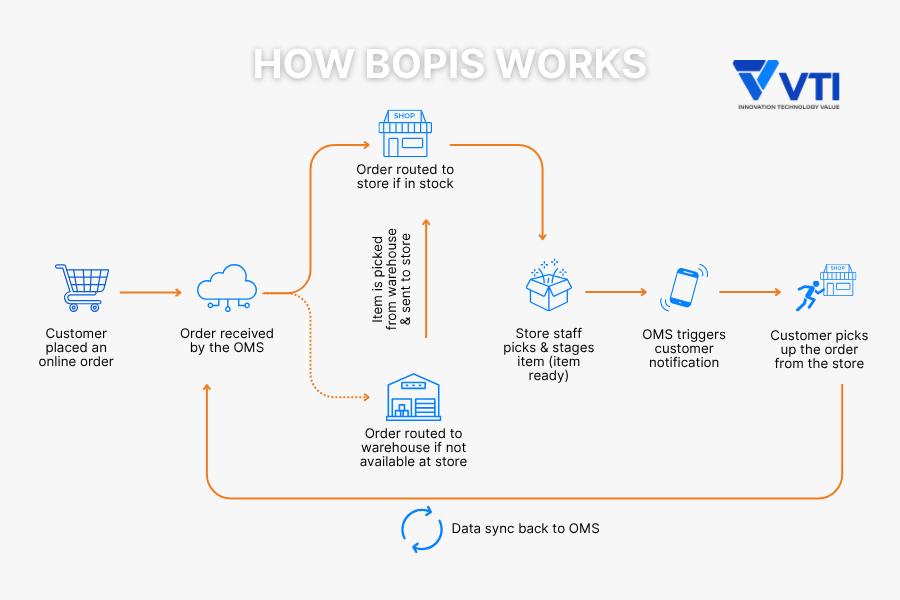
Core components of a BOPIS fulfillment operation
Successfully implementing BOPIS involves more than simply enabling a “store pickup” option at checkout. It requires orchestrating multiple systems and touchpoints to deliver a seamless, real-time experience.
Here are the three core components that define a robust BOPIS ecosystem:
Order & inventory layer
The Order Management System (OMS) checks real-time store-level inventory, processes payments, and provides live status updates in real-time.
Seamless synchronization between warehouses, distribution centers, and stores is critical to ensure product availability accuracy, a foundational element for maintaining customer trust.
Store operations layer
Once an order is placed, store systems must receive it, assign picking tasks, and prepare items for handoff.
Tight integration between POS, inventory, and customer notification systems (via email, SMS, or mobile apps) ensures efficient coordination and timely communication.
A smooth in-store handover (ideally under two minutes) is key to a frictionless customer experience.
Optimization layer
Data from order pickups, including frequency, timing, and cross-sell behavior, feeds into CRM and analytics platforms.
These insights support smarter decisions around product allocation, staffing, and customer engagement, turning fulfillment into a continuous improvement loop that drives both efficiency and loyalty.
BOPIS vs. other omnichannel models
While BOPIS has gained traction globally, it’s important to distinguish it from other omnichannel strategies:
| Model | How it works | Customer benefit | Operational complexity |
| BOPIS | Customer places an order online and picks it up at a store. | Quick access, zero delivery cost, in-store engagement. | Moderate. Requires local stock accuracy, system integration, and staff coordination. |
| Click & Collect | Similar to BOPIS but may involve third-party pickup points (e.g., lockers, convenience stores). | Flexible pickup locations. | Moderate to high. Depends on external logistics partnerships. |
| Curbside pickup | Customer collects their order from outside the store without entering. | Minimal contact, faster pickup. | High. Requires real-time staff communication and location logistics. |
| BORIS (Buy online, return in store) | Enables customers to return online purchases in a physical store. | Easier returns, instant refunds. | Moderate. Requires inventory reconciliation logic. |
Why BOPIS matters?
As global retail supply chains face mounting cost pressures and consumers demand more flexible experiences, Buy Online, Pick Up In Store has emerged as a dual-benefit model, delivering measurable advantages for both retailers and customers.
For retailers
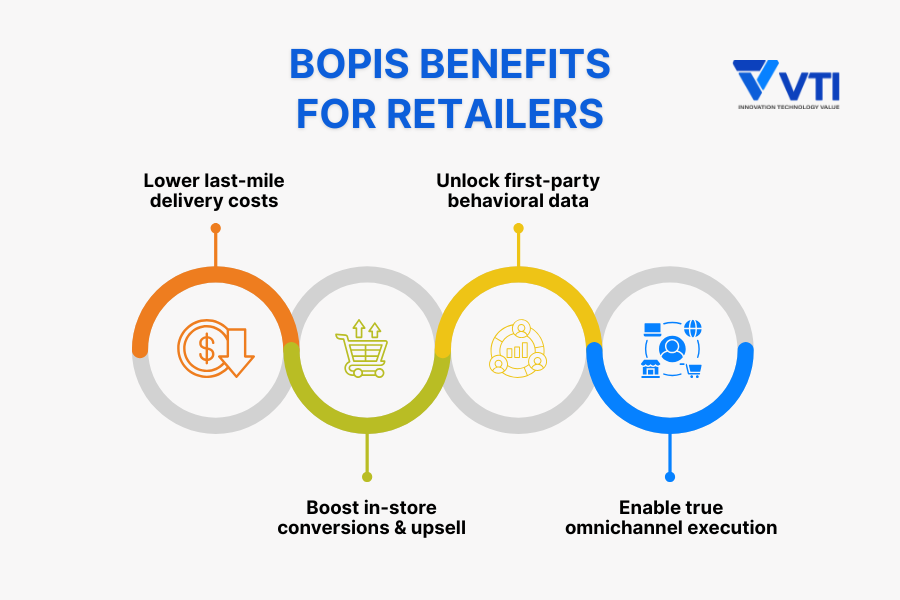
Lower last-mile delivery costs
The last mile remains the most expensive and volatile phase of the fulfillment journey, accounting for over 53% of shipping costs in global B2C logistics. By shifting the final handoff from couriers to stores, BOPIS eliminates the most expensive and unpredictable leg of order fulfillment. It’s no surprise that 84% of e-commerce businesses report year-over-year increases in last-mile expenses (Demand Chain Executive).
Boost in-store conversions and upsell
BOPIS doesn’t just bring customers into stores. It brings in customers with intent.
Shoppers collecting online orders are often primed for additional purchases, making every pickup a high-value touchpoint. According to recent studies, 67% of BOPIS users buy at least one extra item during their visit.
Unlock first-party behavioral data
Each BOPIS transaction creates a valuable data trail: preferred pickup times, location patterns, cross-sell behavior, and repeat frequency.
When integrated across CRM, loyalty, and inventory systems, this data becomes a powerful asset, enabling personalized promotions, smarter stock allocation, and predictive demand planning.
In a privacy-first era, BOPIS is a compliant and high-quality source of first-party insight.
Enable true omnichannel execution
Successful BOPIS operations require, at a minimum, real-time synchronization across core systems, including OMS, e-commerce, POS, and customer communication platforms.
This level of integration ensures inventory accuracy and operational speed at the point of pickup, while also laying the foundation for scalable omnichannel models such as ship-from-store, curbside, and return-in-store.
In many retail transformations, BOPIS becomes the entry point for broader unified commerce capabilities.
For consumers
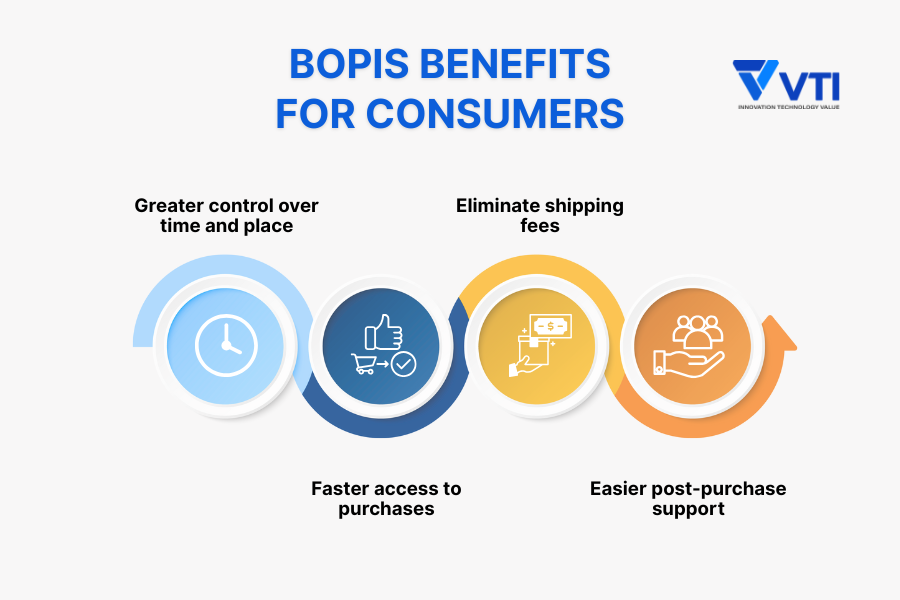
Greater control over time and place
BOPIS empowers shoppers to take control of their fulfillment experience.
Instead of waiting for uncertain delivery windows or risking missed drop-offs, customers choose exactly when and where to collect their orders, aligning perfectly with their daily routines.
Faster access to purchases
With many retailers offering same-day or even two-hour pickup for in-stock items, BOPIS often outpaces home delivery.
For time-sensitive needs, whether it’s a last-minute gift, a missing ingredient, or a tech accessory, store pickup is the fastest path from cart to hand.
Eliminate shipping fees
Delivery costs remain a key barrier to conversion in e-commerce.
By opting for in-store pickup, consumers can skip shipping fees entirely while still enjoying the convenience of online ordering, a combination that reduces cart abandonment and increases satisfaction.
Easier post-purchase support
In-store pickup also simplifies returns and exchanges.
Customers can inspect items immediately, speak directly with staff, or complete returns on the spot if something doesn’t meet expectations.
In markets with BORIS (Buy Online, Return In Store), the entire post-purchase journey becomes more seamless and trusted.
Read also: Omnichannel Fulfillment: 4 Best Software For Asian Retailers
How to implement BOPIS: a step-by-step framework for scalable rollout
Implementing BOPIS successfully requires more than adding a “pickup in store” option to a website. Below is a six-step roadmap based on VTI Group’s experience supporting retailers across Asia.
Step 1: Define fulfillment scope and service levels
Start by identifying which product categories, store types, and customer segments will participate in BOPIS.
Not every SKU or location needs to be included initially.
– Prioritize high-volume, low-fragility items with consistent turnover.
– Select urban and commuter-zone stores where pickup convenience is highest.
– Define service-level agreements (SLAs) (e.g., 2-hour, same-day, or next-day pickup) based on operational capacity.
Step 2: Integrate the core systems
System integration is the backbone of BOPIS.
At a minimum, four systems must communicate in real time:
– E-commerce platform / OMS: captures the order and routes it to the correct store.
– Inventory management system (IMS): validates stock and reserves items instantly.
– POS/store operations system: confirms order arrival, triggers picking tasks, and updates status.
– CRM / notification engine: informs customers when the order is ready and records pickup data.
Step 3: Design in-store workflow
Digital readiness alone doesn’t guarantee success; in-store processes must be equally structured.
A BOPIS workflow generally includes:
– Orders appear on the store dashboard.
– Item are picked and staged in a dedicated zone.
– Status update to OMS → triggers “ready for pickup” message.
– Customer arrival verification via QR code or order ID.
– Pickup confirmation through POS; inventory auto-adjusts.
– Operational excellence depends on clear staff roles, visual SOPs, and short hand-off times (target: under 2 minutes per pickup).
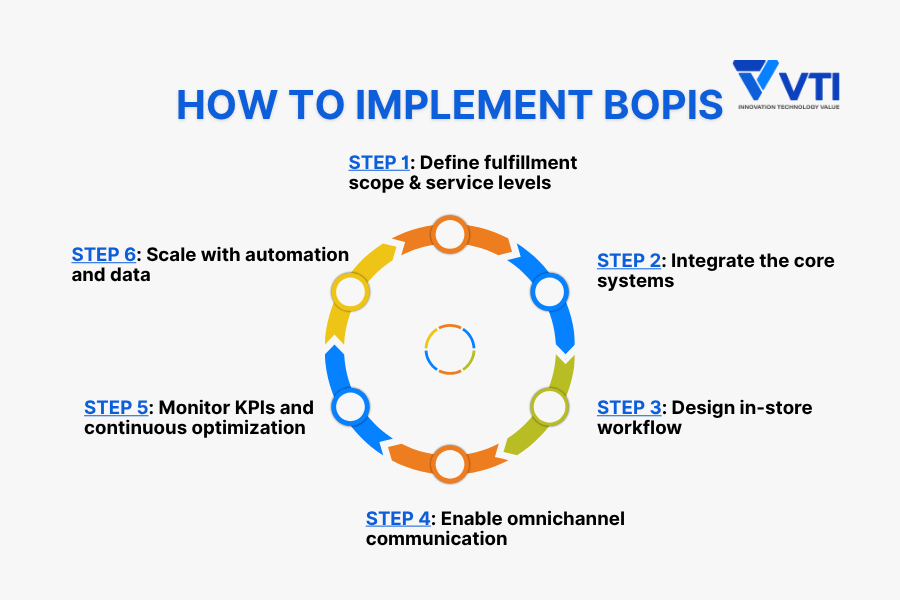
Step 4: Enable omnichannel communication
A well-timed notification experience is as critical as the fulfillment itself.
– Use email, SMS, or in-app messages.
– Key touchpoints: order confirmation → ready for pickup → pickup reminders → feedback request.
– Consistency in tone and timing builds trust.
Step 5:Monitor KPIs and continuous optimization
Once live, track key operational and customer metrics to refine performance:
| KPI target | Insight |
| Average lead time (order → ready) | ≤ 4 hours for urban areas |
| Pickup completion rate | > 95 % within promised window |
| Cross-sell rate at pickup | +10 % vs. baseline store average |
| Inventory accuracy | 99 % or higher |
| Customer satisfaction (CSAT) | ≥ 4.5 / 5 |
Step 6: Scale with automation and data
Once foundational workflows stabilize, expand BOPIS into a data-driven ecosystem:
– Automate store routing with AI-based order assignment (nearest-stock logic).
– Add smart lockers or QR pickup kiosks for after-hours convenience.
– Connect pickup data to loyalty, CRM, and demand forecasting.
– Trigger personalized offers to drive return visits.
How global top retailers make BOPIS work
UNIQLO
UNIQLO didn’t treat BOPIS as an add-on. They redesigned its fulfillment logic around it.
Under its LifeWear Digital Strategy, UNIQLO built a fully synchronized network connecting e-commerce, warehouse management (WMS), and in-store POS systems. Customers can select two primary pickup modes:
– “Ship-to-Store” (2–4 days): items shipped from distribution centers to the customer’s chosen store.
– “Order & Pick” (approx. 2 hours): fulfilled directly from store inventory for immediate pickup.
Both options are free, and UNIQLO holds items for 14 days after the “ready” notification — a deliberate buffer to match Japanese consumers’ scheduling habits.
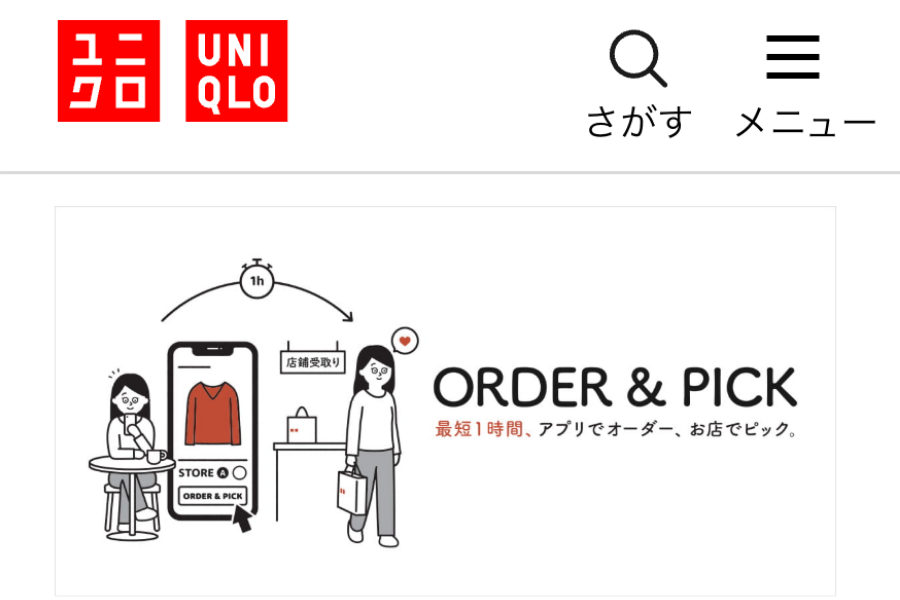
Behind this simplicity lies serious engineering:
– Each order triggers real-time synchronization between OMS ↔ POS ↔ Payment ↔ Notification systems.
– If stock discrepancies persist for even a few minutes, the entire pickup promise collapses — unacceptable in Japan’s zero-error retail culture.
In-store, the process follows a rigorously timed SOP:
– Acknowledge order on the dashboard.
– Pick & stage items in the backroom (10–20 minutes for Order & Pick).
– Trigger “ready for pickup” notification via app or email.
– Verify QR code at the counter; confirm pickup in POS.
– Auto-update inventory and close the loop.
Operational KPIs are tightly managed:
– Lead time: ≤ 4 hours (urban), ≤ 24 hours (regional).
– Inventory accuracy: > 99 %.
– No-show rate: < 5 % (supported by automatic reminders on day 12).
The outcome is striking. Over 40 % of UNIQLO’s online customers now choose Store Pickup, reducing delivery cost by roughly 20 % while raising store foot traffic by 8 %.
Walmart
Walmart’s BOPIS strategy isn’t just about offering store pickup. It’s about turning every store into a full-scale fulfillment node. With over 4,700 store locations across the U.S., Walmart uses proximity as an advantage, routing digital orders to local stores for same-day pickup and curbside collection.
Behind the scenes, Walmart operates a real-time integrated system connecting e-commerce, OMS, local inventory, and store execution. When an order is placed online, it’s routed to the nearest store with available stock. Store staff receive automated pick-and-pack instructions, scan items for staging, and place them in designated pickup zones, or prep them for curbside delivery, depending on the customer’s choice.
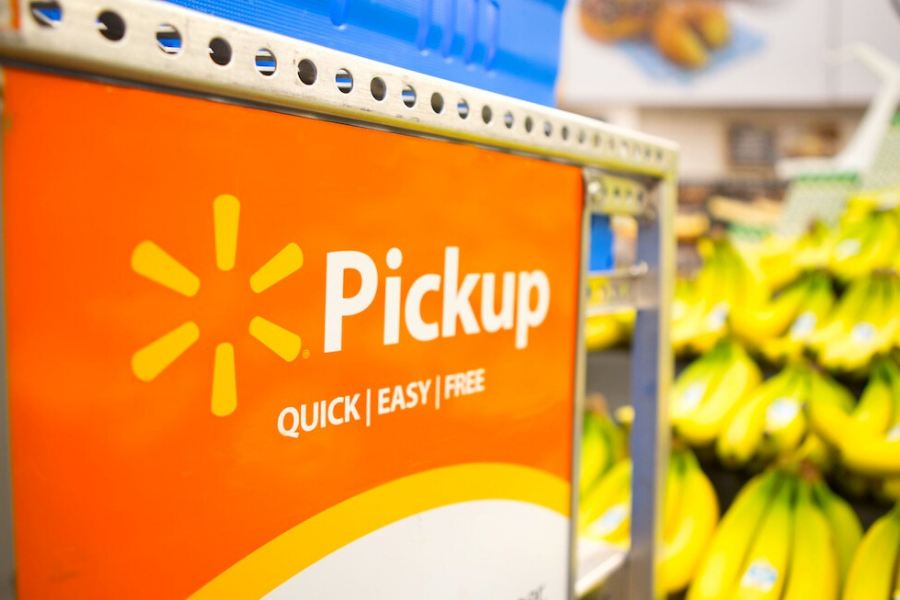
What sets Walmart apart is the operational discipline around pickup readiness and communication:
– Customers receive a precise notification when their order is ready, often within 2 to 4 hours.
– Curbside pickup is fully app-enabled: shoppers check in via the Walmart app, and staff deliver the order directly to their vehicle, typically within 2 minutes of arrival.
– For in-store pickup, signage is clear, staff are trained for fast handover, and orders are pre-packed and verified via barcode scans.
Walmart’s pickup volume is massive. During peak seasons like holidays or back-to-school, store pickup orders can account for more than 40% of all online transactions. Their internal metrics focus not only on fulfillment speed, but also on “order promise accuracy”, ensuring that what’s offered online is reliably available locally.
Key operational metrics include:
– Average pickup readiness: under 4 hours
– Pickup completion within 24 hours: >96%
– CSAT on curbside orders: consistently ≥ 4.7/5
– Labor cost per pickup: lower than last-mile delivery by ~25–35%
Walmart’s model proves that with the right tech and processes, BOPIS isn’t just an add-on — it’s a scalable, profitable fulfillment backbone that supports both digital growth and physical infrastructure.
Lessons learnt from global leaders
Though operating in vastly different markets, both UNIQLO and Walmart treat BOPIS not as a convenience feature, but as a core fulfillment channel. Their success reveals four key lessons:
Build BOPIS into the system, not on top of it
Both retailers redesigned fulfillment flows around store pickup, ensuring that OMS, POS, and inventory systems work in real time, no batch updates, no guesswork.
Operational discipline matters
From UNIQLO’s sub-20-minute staging SOPs to Walmart’s 2-minute curbside handoff, both brands show that customer experience depends on tightly choreographed store processes.
Communication must be precise and timely
Pickup notifications are triggered only when the order is truly ready, preserving customer trust and minimizing failed handoffs.
Pickup drives both savings and growth
At scale, BOPIS reduces last-mile costs while increasing store footfall and upsell potential. When well-executed, it becomes a strategic lever, not just a logistical shortcut.
Is BOPIS The Right Strategy For Your Business?
While BOPIS has proven effective across top-tier retailers, it’s not a universal fit. Success depends on how well your store network, product assortment, and technical infrastructure align with the model.
Consider BOPIS if you have:
– A dense or strategically located store network that can serve as micro-fulfillment hubs
– Fast-moving, non-fragile inventory suited for self-service pickup
– Customers who value flexibility, speed, and in-person engagement
– Real-time system integration across e-commerce, OMS, POS, and CRM
– Store teams ready to manage picking, staging, and handoffs without disrupting floor operations
If your business lacks these conditions, you might explore alternatives like ship-from-store, locker pickup, or third-party collection points as a phased approach.
Ultimately, BOPIS works best not when treated as a feature, but when built as a fulfillment mindset that connects digital intent with physical execution.
Conclusion
BOPIS isn’t just another retail trend. It’s a strategic necessity for staying competitive in today’s evolving retail landscape. By implementing Buy Online, Pick Up In Store services, retailers can reduce fulfillment costs, enhance customer satisfaction, and transform physical stores into data-driven fulfillment centers.
However, BOPIS success depends on more than customer-facing features. It requires real-time system integration, clear communication flows, and well-trained in-store teams, all operating in harmony to deliver consistent service quality across every channel.
For retailers seeking to go further, BOPIS is also a critical part of a broader omnichannel transformation, connecting e-commerce, stores, and customer data into a unified ecosystem. At VTI, our Omnichannel Retail Solutions help retailers design, integrate, and scale fulfillment models like BOPIS with precision and reliability.
Ready to explore how BOPIS could work for your retail operations?
![[FREE EBOOK] Strategic Vietnam IT Outsourcing: Optimizing Cost and Workforce Efficiency](https://vti.com.vn/wp-content/uploads/2023/08/cover-mockup_ebook-it-outsourcing-20230331111004-ynxdn-1.png)



